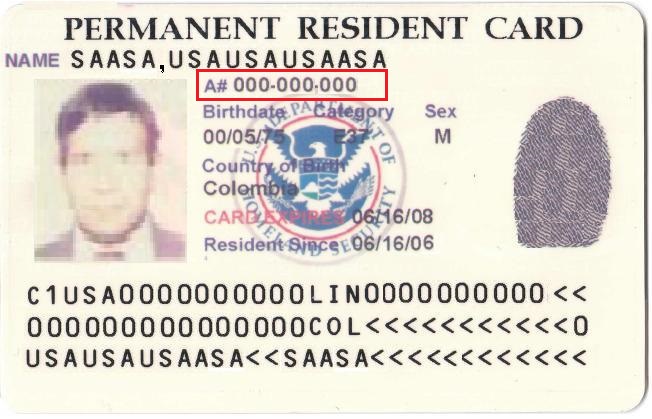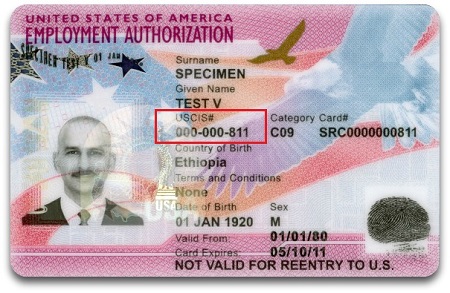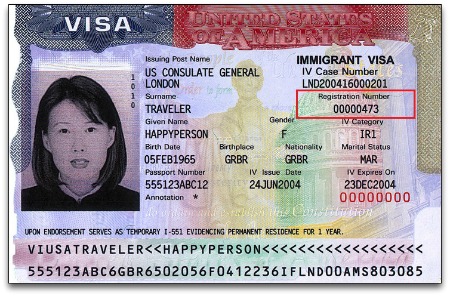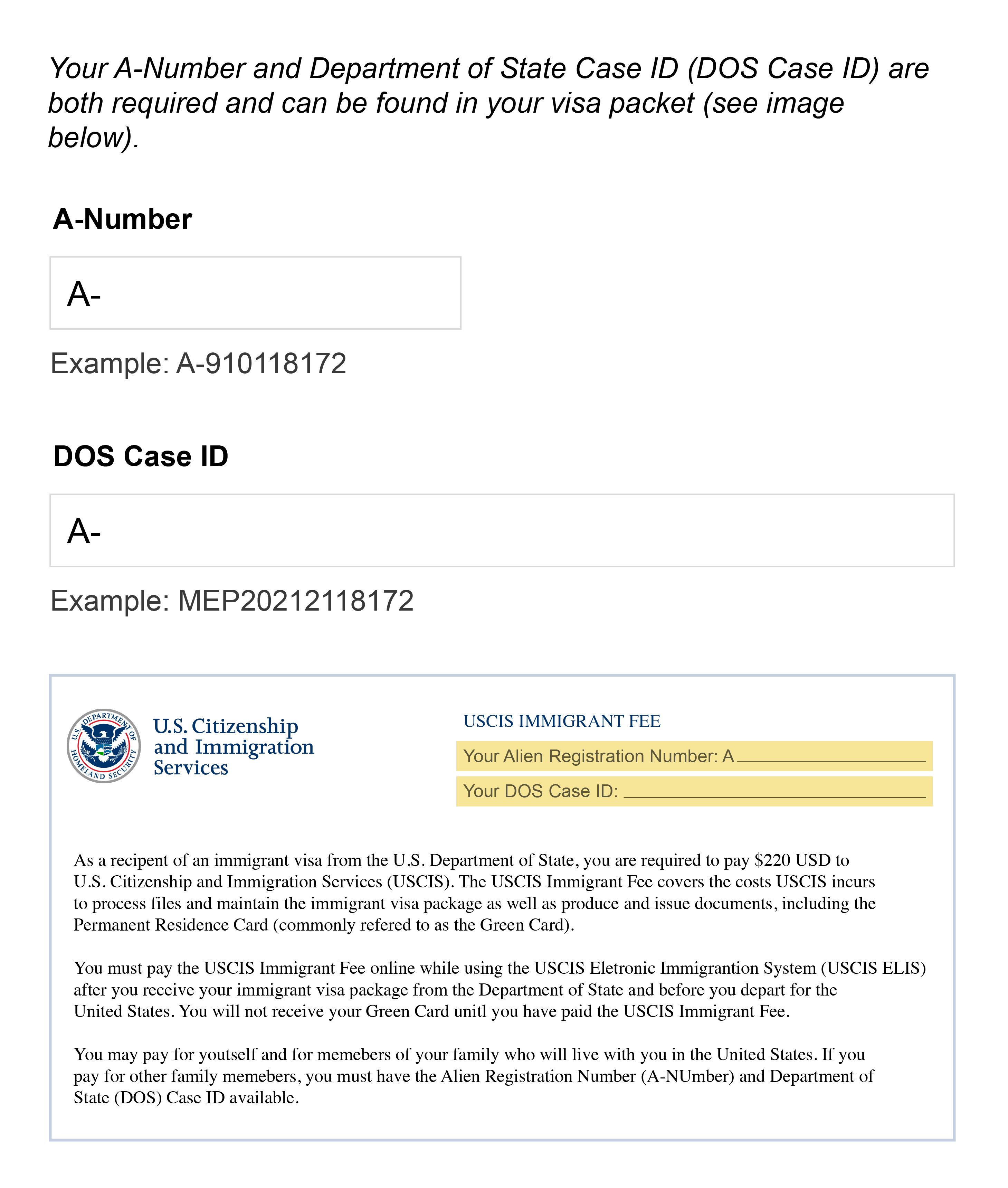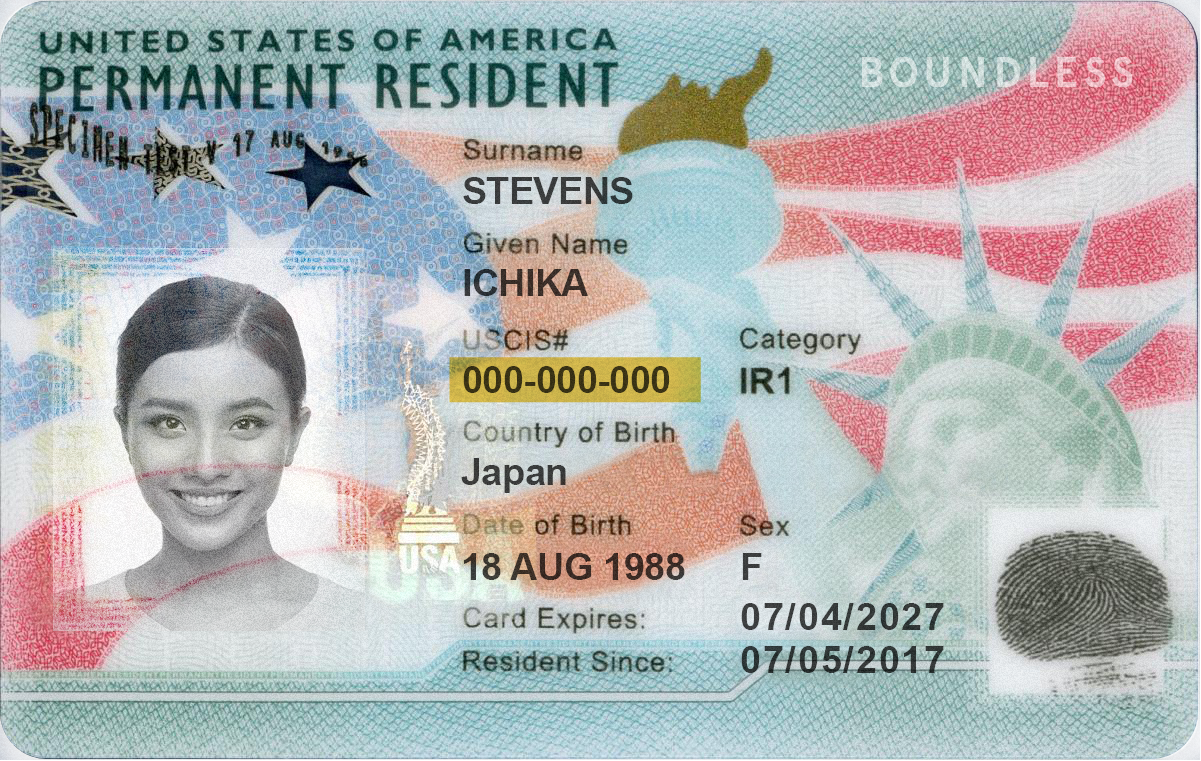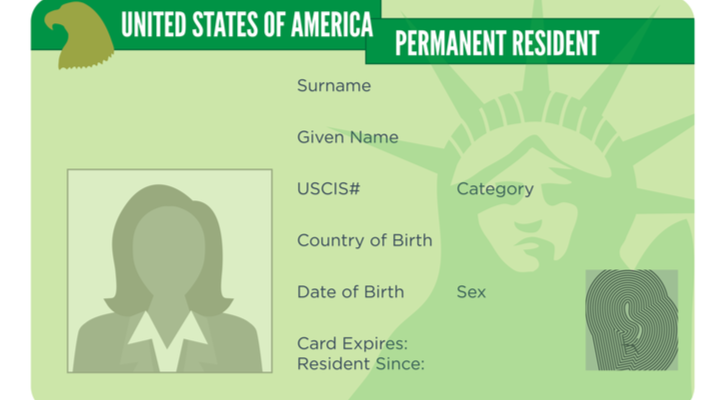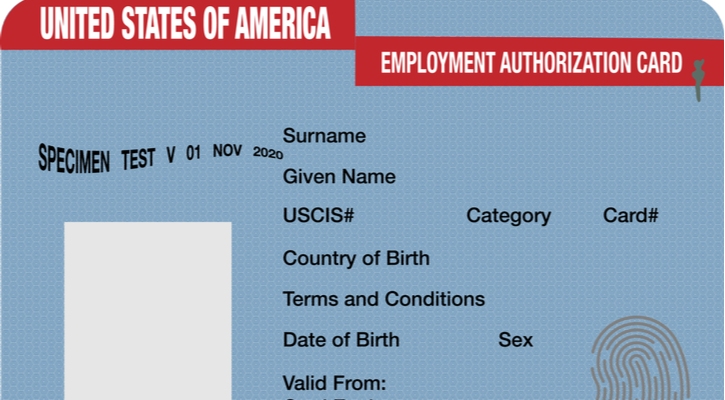alien registration number что это
What is an Alien Registration Number and where do I find it?
Also known as an A-Number, your Alien Registration Number is a seven- to nine-digit number that can be found on a variety of documents from U.S. Citizenship and Immigration Services (USCIS) or the former INS. USCIS uses the Alien Registration Number to track the immigration files for immigrants (and some nonimmigrants). It’s also a critical piece of information when preparing new USCIS forms to request immigration benefits. If your A-Number is fewer than nine digits, insert a zero after the “A” and before the first digit to create a nine-digit number. For example, “12345678” would become “A012345678.”
U.S.-born citizens and many nonimmigrant visitors do not have alien registration numbers.
Find A-Number on a Green Card
If you have a permanent resident card (green card), you can find your Alien Registration Number on the front side. (The number is also embedded within the characters on the backside as well.) In the example below, the A-Number is listed as “000-001-001” underneath USCIS#.
The sample green card below was issued between 2004-2010. The A-Number is listed as “000-000-000” next to A#.
USCIS does not assign everyone an A-Number. USCIS creates an Alien Registration Number for every permanent resident. Generally, they do not assign the number to nonimmigrant visitors. Nonimmigrants include anyone that is in the United States on a temporary basis. B1/B2 visas are nonimmigrant visas for visitors. However, USCIS may assign the Alien Registration Number to certain classes of nonimmigrants that have been granted employment authorization or other benefits.
Find A-Number on an EAD
If you do not have a green card, you may be able to find your Alien Registration Number on other immigration documents such as an Employment Authorization Document (work permit). In the example below, the A-Number is listed as “000-000-811” underneath USCIS#.
If you are unable to locate your Alien Registration Number on one of the documents below, CitizenPath can help you request your A-Number through a Freedom of Information Act (FOIA) Request. We’ll help you prepare Form G-639, Freedom of Information Act (FOIA) Request and provide instructions on how to file it with USCIS. Use Form G-639 to get a copy of your A-Number or even your entire immigration file. You should expect it to take at least 8 weeks before USCIS responds with the requested A-Number and much longer for complete immigration files. CitizenPath can help you prepare Form G-639, FOIA Request for a very low cost. Once prepared, it’s free to file. Get started now >>
Find A-Number on Immigrant Visa
You can also find an Alien Registration Number on an immigrant visa. Your immigrant visa, also called a visa stamp or visa foil, is found in your passport. Your A-Number is identified as the “Registration Number” in the top right portion of the visa stamp.
Note: The visa pictured above is an immigrant visa. It’s different than a nonimmigrant visa. A nonimmigrant visa does not contain an Alien Registration Number.
Find A-Number on Notice of Action
Some versions of the Notice of Action may contain the Alien Registration Number. In the I-797C (biometrics notice) below, the A-Number is located in the top/right of the document next to USCIS#.
Alien Registration Number, Explained
Understanding the difference between your A-number and your USCIS case number
After your initial application for a green card, you’ll be asked to provide your Alien Registration Number (also called an “A-number,” “A#,” or “USCIS number”) on any forms or petitions you file with U.S. Citizenship and Immigration Services (USCIS). So what is an A-number, and where do you find it?
In a nutshell, Alien Registration Numbers are identification numbers for non-citizens. It’s a way for the U.S. government to keep track of all the different immigration forms and petitions that a person might file over the years. Every immigrant gets a unique number, which they keep for life.
In this guide, you’ll learn about:
Premium immigration support without the high price tag. Browse our services.
Who Gets an Alien Registration Number?
Alien Registration Numbers are assigned to everyone who applies for a green card, regardless of whether they’re eligible through family ties, employment, or as a refugee or asylee. All immigrants — meaning anyone who intends to live permanently in the United States — get an Alien Registration Number.
Most non-U.S. citizens who are in the United States temporarily, such as on a business or tourist visa, don’t get an Alien Registration Number. That’s because they’re seen as short-term visitors, not permanent immigrants.
There’s one exception: People on F-1 student visas who get work authorization are given an Alien Registration Number, even though they aren’t applying for a green card. Why do students with work authorization get an Alien Registration Number while other foreign workers don’t? We’ve asked around and can’t seem to find a satisfactory answer. Sometimes the U.S. immigration system is quirky.
With Boundless, you don’t have to worry about remembering form numbers or which specific forms you need for your situation. You simply answer a series of questions online — typically within just a couple of hours, compared with days or weeks the traditional way — and the completed forms arrive at your doorstep. Learn more about our services, or find out if you qualify for a green card.
When Do I Get an Alien Registration Number?
Most people are first given an Alien Registration Number when they apply for a green card. However, if you previously gained work authorization while in the United States on an F-1 student visa, you might already have been issued an A-number. This is most likely to be the case if you worked under the Optional Practical Training program after finishing your studies.
If you’re applying for a marriage green card from inside the United States, your Alien Registration Number will be included on the receipt notice you receive from USCIS after filing your green card application form.
If you’re the spouse of a U.S. citizen, you’ll file your green card application form — officially called the I-485 — right away, and get your A-number about 30 days after beginning the application process. If you’re the spouse of a green card holder, you won’t file your I-485 until your your I-130 petition is approved and an immigrant visa is available, so you won’t get an A-number until about a year into the process.
If you’re applying for a marriage-based green card from outside the United States, your Alien Registration Number will be assigned to you when you attend your consular interview at the U.S. consulate. Regardless of whether your spouse is a U.S. citizen or a green card holder, you’ll receive some paperwork with your A-number during the consular interview. You’ll also be able to find your Alien Registration Number in the visa the consulate stamps in your passport.
Boundless can help you obtain a marriage-based green card with minimal hassle. We print out all of your forms and documents, assembled precisely how the government prefers. We mail the whole package to your doorstep, ready for you to sign and send to the correct government address. Learn more about how Boundless can help, or check your eligibility for free.
Where Can I Find My Alien Registration Number?
Once you’ve applied for a green card, your Alien Registration Number will be on all of the documents that USCIS sends you, including the notice you get telling you that USCIS has received your green card application. You’ll also see your Alien Registration Number on any, approval notices, and essentially all correspondence you get from USCIS.
On most forms that you’ll receive from USCIS, your Alien Registration Number will be labeled “A#” and posted prominently near the top of the first page.
If you apply from outside the United States, you’ll find your A-number on the Immigrant Data Summary and USCIS Immigrant Fee handout that you’re given when you attend your consular interview. You’ll also find your A-number on the visa stamped in your passport once your application is approved.
Once you get your physical green card, your Alien Registration Number (labeled “USCIS#”) will be on both the front and the back of the card.
IMPORTANT! If you’ve lost your Alien Registration Number, and can’t find any USCIS documents, visas, or other paperwork that might contain it, you can use the Freedom of Information Act (FOIA) system to obtain a copy of your immigration file, which will include your A-number. You can also schedule an InfoPass appointment at your local USCIS office and ask for help. (Note that self-scheduled appointments are being phased out, so this option won’t be available to everyone.)
Boundless stays with you until the green card finish line, helping you keep on top of interview preparation, follow-on forms, and every other important milestone along your immigration journey. Learn more, or check your eligibility for free.
A-Numbers vs. USCIS Case Numbers
Your Alien Registration Number isn’t the only number you’ll see on your receipt notices. You’ll also have a USCIS case number, or receipt number, which is used to track your specific application and to check your application status online.
Think of it this way: The Alien Registration Number is assigned to you, while your case number is assigned to your application. If, for example, you apply for a green card now and apply for U.S. citizenship in the future, your two applications will have different USCIS case numbers, but your individual A-number will remain the same.
You can tell your A-number and your USCIS case number apart by how they look. Your A-number is always a 7, 8, or 9-digit number. Your USCIS case number, on the other hand, is a 13-character code beginning with 3 letters (such as “MSC” or “EAC”) and then 10 numbers.
Confusingly, you’ll sometimes see “USCIS number” or “USCIS#” — without the “case” — used to refer to your Alien Registration Number. Make sure you double-check which number you need to use!
IMPORTANT! The Alien Registration Number isn’t the same thing as a Social Security Number (SSN), which is used by the Internal Revenue Service and the Social Security Administration to keep track of U.S. workers’ income, taxes, and benefits. You can apply for an SSN along with a work permit as part of your green card application.
Is the Alien Registration Number the same as Form I-94?
No. Whereas your A-number is either 7, 8, or 9 digits long, the admission record number, found on Form I-94, has 11 digits. The admission record number is a unique identifier used internally by the U.S. Customs and Border Protection (CBP) agency to keep track of lawful entries into the United States. You can access most I-94 records on the Department of Homeland Security’s website.
What’s an Alien Registration Card?
An alien registration card is simply another name for your green card (Form I-551), or permanent resident card. You can find your A-number on your green card, which is why it is sometimes referred to in this way.
The USCIS terminology can be confusing. If ever unsure about the meaning of a term, you can use the USCIS Glossary to find the definition of the word or phrase in question. Simply type the word into the search field — or filter the database alphabetically using the dropdown menu — then press the search button.
Alternatively, you can reach out to Boundless, and we can help you find the answers you’re looking for.
Do DACA recipients get an Alien Registration Number?
If you are already a beneficiary of the Deferred Action for Childhood Arrivals (DACA) program, then you have most likely been issued an A-number. If you’re filing to renew your DACA status, you will need the Alien Registration Number to fill out item 6 of Form I-821D, known as Consideration of Deferred Action for Childhood Arrivals. You should be able to find your Alien Registration Number on the approval notice you received for the initial application.
If you’re filing Form I-821D for the first time, you may not have an A-number. If you’re unsure, you can look at any paperwork you’ve received from USCIS. The A-number appears on most correspondence sent by this agency.
Is my Alien Registration Number on my passport? If so, where is it?
If you’ve applied for a green card from outside the United States, then you should have received an immigrant visa stamp, containing your A-number, in your passport. You may not have such a stamp, however, if you applied for your green card from within the United States.
Below is an example of the machine-readable immigrant visa (MRIV) placed in your passport upon arrival. In this example, the A-number is “00000473.”
How do I get an Alien Registration Number?
To get an Alien Registration Number you must apply for certain immigration benefits or statuses. As mentioned above, only certain immigrants are given an A-number, so you can’t apply for just any status. The most common way to obtain this type of identification number is to apply for a green card, but you might also be able to receive one through other means — such as with the F-1 visa or DACA.
Will my Alien Registration Number expire?
No. Once you have been assigned a number, you will have it for the rest of your life. Your immigration status, however, can expire. For instance, if you have a green card, you will need to renew it after 10 years, unless you’re a conditional permanent resident (CPR), in which case you’ll need to file Form I-751 — around 2 years after receiving your initial approval — to remove conditions from your permanent residency.
Where can I find the Alien Registration Number on my Employment Authorization Document (EAD)?
You’ll find the A-number on the front of your EAD beneath “USCIS#” as shown below. In the example given here, the number is “000-000-701.”
What is an Alien Registration Number?
The A-number for an individual will not change but may be referred to interchangeably as a “USCIS number”, “alien registration number”, or “alien number”.
A #, Alien Number, USCIS Number, are They all the Same?
“A #” is simply short for Alien Registration Number. The “USCIS number” listed on government documents, such as permanent resident Green Cards issued after May 10, 2010, are also the same as A- numbers. All of these terms mean the same thing.
Who can get an Alien Number?
Alien Registration Number and its Uses
Alien Registration Number is the first piece of information required in many of the immigration forms. Some important forms on which it is required are Green Card Renewal Application (Form I-90), U.S. Citizenship Application (Form N-400), Employment Authorization Application (Form I-765), Petition for Relative Application (Form I-130), and more.
Note: If you are looking to prepare any immigration form then check out our immigration form preparation services.
Where to find the Alien Registration Number?
The alien number is found in different locations on different types of government documents.
Alien Number on a Green Card:
On permanent residence cards issued after May 10, 2010, the A-number is the same as the USCIS number listed on the front of the card. The A-number can also be found on the back of the card.
For permanent residence green cards issued between 2004-2010, the A number is listed after “A#”
Alien Number on an EAD card:
On EAD cards, or Employment Authorization Document (Work Permit), the A-number is the same as the USCIS number. It can be found under “Given Name.”
Alien Number on an Immigrant Visa:
On immigrant visas, the A-number is the same as the “registration number”, located on the front of the card.
This immigrant visa is different from a non-immigrant visa. The non-immigrant visa does not contain an Alien Registration Number.
Alien Number in Notice of Action:
On some Notice of Action versions, the A- number can be found in the top right-hand corner, next to the USCIS number.
Alien Number on Immigrant Data Summary:
The Immigrant Data Summary document is a part of Consular Processing or the application for a green card abroad. You can find the A-number on the Immigrant Data Summary Document.
Alien Number on Immigrant Fee Handout:
The Immigrant Fee Handout is also a part of the Consular Processing, and will most likely be given to you if applying for a green card abroad. The A-number can be found in the top right-hand corner of the document.
What to do if my Alien Number is less than 9 digits?
If your Alien Registration Number is less than nine digits, for example, if it is an 8 digit number you can insert a zero before the first digit to create a nine-digit number. For example, “12345678” would become “012345678” then you can use it in the forms you may file.
If it is a 7 digit number you can insert two zeros before the first digit to create a nine-digit number. For example, “1234567” would become “0012345678” then you can use it in the forms you may file.
How to get a Green Card?
Executive Orders on Immigration by President Biden
9 millones de residentes permanentes son elegibles para obtener la ciudadanía de EE.UU.
9 Million Green Card Holders Can Become Citizens
El examen de ciudadanía estadounidense no es difícil. Te contamos porqué.
Sign up for our Newsletter
By clicking “Send” you agree to the Terms of Use and Privacy Policy.
Contact
Privacy Policy
Terms of Use
Refund Policy
Sitemap
We are not a law firm, and this site and our software are not a substitute for the advice of a lawyer and do not contain or constitute legal advice. We are not affiliated with or sponsored by the United States government or any government agency. This site provides general information on some commonly encountered immigration matters only and was created to allow you to more simply navigate your completion of immigration paperwork using online software. The content on this site should not be relied on to reach conclusions about any person’s specific situation. Self-help software and customer support services are provided solely at a user’s direction. Customer support is for technical and billing issues only and will not answer legal questions. We do not provide legal advice, opinions, or recommendations about any individual’s specific legal rights, remedies, defenses, options, or strategies. We do not make form recommendations or recommend or provide answers to specific questions on forms, and communications between you and us are not protected by any privilege. Purchase prices do not include applicable government agency filing or biometrics fees, if any. The forms that can be completed using our software can be obtained for free from the U.S. Citizenship and Immigration Services (USCIS) as blank forms with written instructions. Automated eligibility quizzes were created using instructions, rules and regulations published by the USCIS and only indicate whether you meet minimum eligibility requirements to apply for the given immigration benefit. Quiz results do not guarantee eligibility or ineligibility as you may or may not be eligible based on reasons not addressed in the quizzes. Your access to and use of this site, including any purchase, is subject to and constitutes your agreement to the website Privacy Policy and Terms of Use. Refunds will only be issued if requested within thirty (30) days and before completed application is printed. Exceptions and restrictions may apply; see Refund Policy for details.
Copyright © 2007-2021. All Rights Reserved.
Alien Registration Number: What Is It And Where To Find It
Vivien Thuri
When you apply to live in the US permanently, or to study, the US government will create your very own “Alien File”. On top of this, they’ll give your “A-File” a unique number, called your “Alien Registration Number”. In this article, you’ll learn what your Alien Number really is, and where it can be found.
Additionally, when applying for an immigrant visa, there are usually some fees involved. If you have a non-USD bank account, then switching to a competitive online money service could save you a lot in extra fees.
This is where Wise can help you.
When the United States Citizenship and Immigration Services (USCIS) creates your A-File, they’ll assign a number to it. This seven- to nine-digit number is known as your “Alien Registration Number”, “USCIS Number”, or simply “A-number”, and will stay with you throughout all future interactions with the USCIS.¹ ²
Where to find an Alien registration number?
If you’ve been scratching your head trying to figure out where to find your Alien registration number, then scratch no longer!
You can find your Alien Registration Number on your green card where it says USCIS-Number, if it was issued after May 10, 2010. You can also find it on the back of these cards.⁴
Additionally, if you don’t have your green card to hand, then you can also find your Alien Registration Number on your Employment Authorization Document (EAD), immigrant data summary, USCIS Immigrant Fee handout, and your immigrant visa stamp.
You can find your Alien Registration Number:
At the top of your immigrant data summary, which will have been stapled to your immigrant visa package at your US embassy or consulate appointment
At the top right-hand corner of your Immigrant Fee Handout, given to you at your US embassy or consulate interview
On the visa stamp in your passport, called the “Registration Number”⁵ ⁶
Need some support with your green card? Try Wise
If you’re in the process of getting your green card, then Wise may be just what you’re looking for. When applying for permanent residency, there are quite a few fees involved, and if you don’t have a US bank account, you could end up spending a lot in conversion fees.
You’ll convert your money at the real, mid-market exchange rate.
If you’re looking to set up a US bank account, why not save yourself time and money by just opening a multi currency account with Wise?
All sources checked 17 June 2021
This publication is provided for general information purposes only and is not intended to cover every aspect of the topics with which it deals. It is not intended to amount to advice on which you should rely. You must obtain professional or specialist advice before taking, or refraining from, any action on the basis of the content in this publication. The information in this publication does not constitute legal, tax or other professional advice from TransferWise Limited or its affiliates. Prior results do not guarantee a similar outcome. We make no representations, warranties or guarantees, whether express or implied, that the content in the publication is accurate, complete or up to date.

